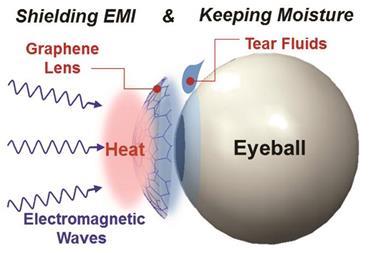A smart contact lens with a rechargeable supercapacitor power source that can be charged up wirelessly could be used to track a wearer’s health, without compromising on comfort.
Smart contact lenses could continuously monitor fluid in the eye for biomarkers linked to diseases such as diabetes and glaucoma. They might even usher in a new era of augmented reality, taking wearable tech to a new level.
But how might these lenses be powered? Traditional batteries are too large, too hard and produce too much heat to be incorporated into a comfortable lens.
Now, scientists have developed a printable supercapacitor that can be integrated into a contact lens alongside an antenna and a red LED – all without obscuring the wearer’s vision. The supercapacitor can even be recharged wirelessly while the lens is being worn. It might sound like science fiction, but someone has already worn the lens and tested all of its functions.
The supercapacitor is made of carbon electrodes and a solid-state polymer electrolyte. These are dispersed in a solvent and printed as separate layers onto the lens using a process called microscale direct ink writing. This high-precision technique allows the supercapacitor to be printed outside of the area that covers the wearer’s pupil, meaning it won’t interfere with their vision.
A flexible wireless power transfer unit – comprising an ultrathin rectifier circuit and an antenna made from silver nanofibers and silver nanowires – enables the lens to be recharged at a distance of around 1cm from a transmitting coil. The assembly was tested on a mannequin, before being trialled on live rabbits and finally a human. During the 10 minute human trial, no damage was detected to wearer’s eye.
References
J Park et al,Sci. Adv., 2019, DOI: 10.1126/sciadv.aay0764



























No comments yet